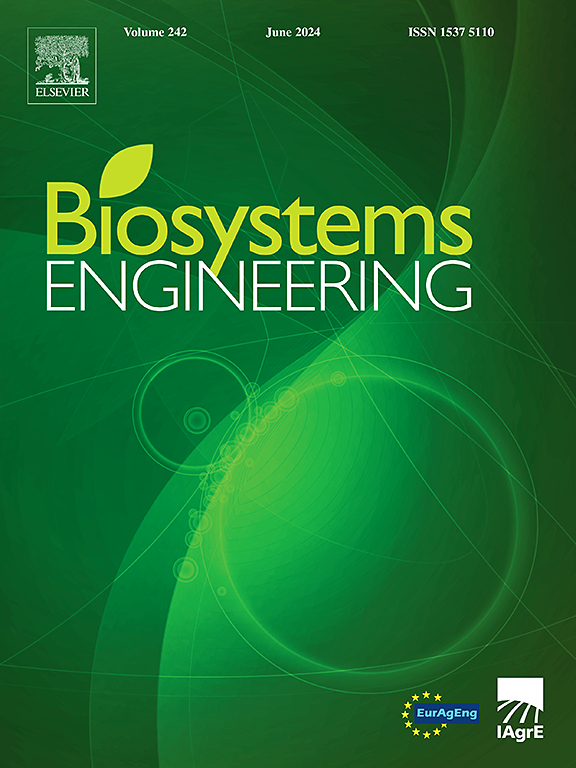基于机器视觉的百香果流变特性与成熟度的相关性研究
IF 4.4
1区 农林科学
Q1 AGRICULTURAL ENGINEERING
引用次数: 0
摘要
流变特性在食品生产和质量控制中起着重要的作用。本研究探讨了百香果流变性参数与品质特性之间的关系,并基于百香果的流变性建立了百香果成熟度分类模型。每个样品经过流变学测试、纹理轮廓测试、穿刺测试和理化指标测试。这些试验旨在收集精确的百香果力学和生理信息。我们搭建了一个力学测试平台,并利用机器视觉对水果的微变形进行了分析。该平台可以实时测量接触面积和载荷值,以获得准确的压缩应力值。对完整的百香果进行了无损流变试验,得到了加载阶段的弹性模量。这与传统赫兹接触理论的结果高度一致。此外,通过拟合五元Maxwell模型得到了保温阶段的应力松弛参数。值得注意的是,流变参数与大部分织构参数或理化指标存在较强的相关性,相关系数最高可达0.703。因此,流变参数被用作成熟度分类模型(GBDT、MLP和AdaBoost)的输入。所有模型均获得了满意的分类结果。特别是,GBDT模型表现出了出色的分类性能和泛化能力,Precision、Recall和F-Score分别为80.44%、80.08%和80.26%。结果表明,利用百香果的无损流变特性来确定成熟度是可行的。本文章由计算机程序翻译,如有差异,请以英文原文为准。
Correlation between rheological properties and maturity of passion fruit based on machine vision
Rheological properties play an important role in food production and quality control. This research explores the relationship between rheological parameters and quality characteristics of passion fruit and establishes a maturity classification model for passion fruit based on its rheological properties. Each sample undergoes a rheological test, texture profile test, puncture test, and physicochemical index test. These tests aim to gather precise mechanical and physiological information on passion fruit. We built a mechanical testing platform and used machine vision to analyse the micro-deformation of fruit. The platform can measure the real-time contact area and load value to obtain accurate stress values during compression. Non-destructive rheological tests were conducted on intact passion fruit to get the elastic modulus during the loading stage. It is highly consistent with the results of traditional Hertz contact theory. Additionally, the stress relaxation parameters were obtained by fitting the five elements Maxwell model during the holding stage. Notably, there are strong correlations between the rheological parameters and most texture parameters or physicochemical indicators, with the highest correlation coefficient reaching 0.703. Therefore, the rheological parameters were utilised as inputs for maturity classification models (GBDT, MLP, and AdaBoost). All models achieved satisfactory classification results. Particularly, the GBDT model demonstrated excellent classification performance and generalisation capability, with Precision, Recall, and F-Score of 80.44%, 80.08%, and 80.26%. The results show that it is feasible to determine the maturity of passion fruit based on non-destructive rheological characteristics.
求助全文
通过发布文献求助,成功后即可免费获取论文全文。
去求助
来源期刊

Biosystems Engineering
农林科学-农业工程
CiteScore
10.60
自引率
7.80%
发文量
239
审稿时长
53 days
期刊介绍:
Biosystems Engineering publishes research in engineering and the physical sciences that represent advances in understanding or modelling of the performance of biological systems for sustainable developments in land use and the environment, agriculture and amenity, bioproduction processes and the food chain. The subject matter of the journal reflects the wide range and interdisciplinary nature of research in engineering for biological systems.
 求助内容:
求助内容: 应助结果提醒方式:
应助结果提醒方式:


